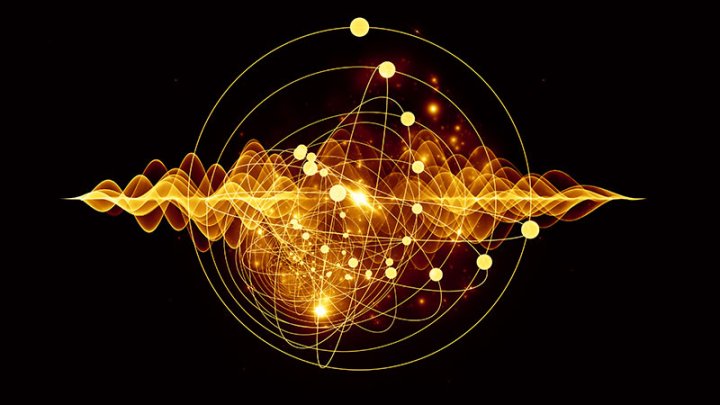A Journey to the Edge of Reality: Understanding Black Holes
Published:
The image of a black hole, with its swirling accretion disk and dark event horizon, has captured the human imagination like few other cosmic phenomena. Black holes are regions in spacetime where gravity is so strong that nothing—not even light—can escape. They are the ultimate cosmic enigmas, governed by some of the most profound and complex equations in physics. This blog post, “A Journey to the Edge of Reality,” will explore the science behind black holes, breaking down the complex ideas and equations that describe them. We’ll delve into the physics that governs their behavior and the concepts that are leading us to a new understanding of gravity and the very fabric of the universe.
Black holes are not just theoretical constructs; they are real objects, observed and measured by astronomers using powerful telescopes. The first-ever image of a black hole, captured by the Event Horizon Telescope, was a landmark moment in science, confirming decades of theoretical work. While the visual is stunning, the true nature of a black hole is best described by the elegant and complex language of mathematics. The equations you see are not just abstract symbols; they are the tools that allow physicists to predict their behavior, from the radiation they emit to how they warp spacetime. This blog post will be your guide to understanding the theoretical framework that describes these cosmic monsters.
The Physics of a Black Hole: Beyond the Event Horizon
To truly understand black holes, we must move beyond the simple concept of a region of no return. We need to explore the physics that describes their energy, dynamics, and interaction with the fundamental forces of the universe.
The Energy of a Black Hole
The first equation describes the rate of energy emission from a black hole, often related to Hawking radiation, a phenomenon where black holes are thought to slowly lose mass and energy over time.
\[\frac{dE}{dt} = \sum_{l} N_l |A_l|^2 \frac{\omega}{exp(\omega/T_H)-1} \frac{d\omega}{2\pi}\]- $dE/dt$: The rate of change of energy over time, which represents the power or luminosity of the radiation emitted by the black hole.
- $\sum_{l}$: This is a summation over all the different quantum states ($l$) of the particles being emitted.
**$N_l A_l ^2$**: This term relates to the number of particles in a given state and their probability of being emitted. - $\frac{\omega}{exp(\omega/T_H)-1}$: This is a key part of the equation, known as a Bose-Einstein distribution. It describes the energy spectrum of the emitted particles. The temperature of the black hole, $T_H$, is a crucial part of this.
- $d\omega / 2\pi$: This term is a density of states factor, ensuring the equation correctly accounts for the energy levels of the particles.
This equation tells us that black holes are not just cosmic vacuum cleaners; they are complex thermodynamic systems that emit a specific spectrum of particles, a concept that beautifully marries quantum mechanics and general relativity.
The Dynamics of a Rotating Black Hole
Black holes can also be described by their rotation, which significantly complicates their dynamics. The second equation, which is more specialized, may be related to the quasinormal modes of a rotating black hole, or how it “rings” when disturbed.
\[\omega = \frac{(1+2l)(1-0.065p)-i(2n+1)(1-0.094p)}{3\sqrt{3}r_0}\]- $\omega$: This represents a complex frequency, describing both the frequency of the “ringing” and how quickly it decays.
- $l$ and $n$: These are quantum numbers that classify the different modes of oscillation, much like different notes on a bell.
- $p$: This term likely relates to the spin of the black hole, a crucial parameter in its dynamics.
- $r_0$: This represents the radius of the black hole.
This equation provides a detailed mathematical description of the subtle vibrations that a spinning black hole would exhibit after a disturbance, offering a way to test the predictions of general relativity against astronomical observations.
The Lagrangian and the Fabric of Spacetime
The final equation is a Lagrangian, a fundamental concept in theoretical physics used to describe the dynamics of a physical system. The specific form shown is likely from a more advanced theory that attempts to extend or modify Einstein’s theory of general relativity.
\[L = \frac{1}{2}R - \frac{1}{4} \partial_{\mu}\phi \partial^{\mu}\phi + \frac{a'}{8g^2} e^{\phi} (R^{\mu\nu\rho\sigma} - 4R^{\mu\nu} R_{\mu\nu} + R^2)\]- $L$: The Lagrangian density, which is used to derive the equations of motion for a system.
- $R$: This is the Ricci scalar, a central component of Einstein’s field equations, describing the curvature of spacetime.
- $\phi$: This is a scalar field, which is often introduced in modified theories of gravity to explain phenomena like dark energy or to unify different forces.
- $R^{\mu\nu\rho\sigma}$: This is the Riemann tensor, which gives a complete description of the curvature of spacetime.
This equation is far beyond standard general relativity and points to the cutting edge of theoretical physics, where researchers are trying to unify gravity with other forces or understand the nature of spacetime at its most fundamental level.
The War of Frequencies: A Metaphor for Reality
While black holes are described by complex mathematical equations, the “War of Frequencies” image offers a different perspective on reality. It presents a metaphorical idea that our universe, or “matrix,” is built on “inversion and distortion,” and that we are constantly bombarded with man-made frequencies designed to keep us in a state of fear and confusion. The image suggests that these frequencies prevent us from realizing our “true nature” or connecting with our inner self, represented by the colorful chakras.
This spiritual and philosophical concept, while not a part of mainstream physics, speaks to a different kind of reality. It’s a reminder that while mathematics can describe the physical universe with incredible precision, there are other ways of understanding our experience. The “War of Frequencies” is a metaphor for the constant noise and distraction of the modern world, which can obscure our inner peace and personal growth. In a way, both the physics of black holes and the philosophy of frequencies are attempts to understand the fundamental nature of existence—one through the laws of the cosmos, the other through the lens of human consciousness.

